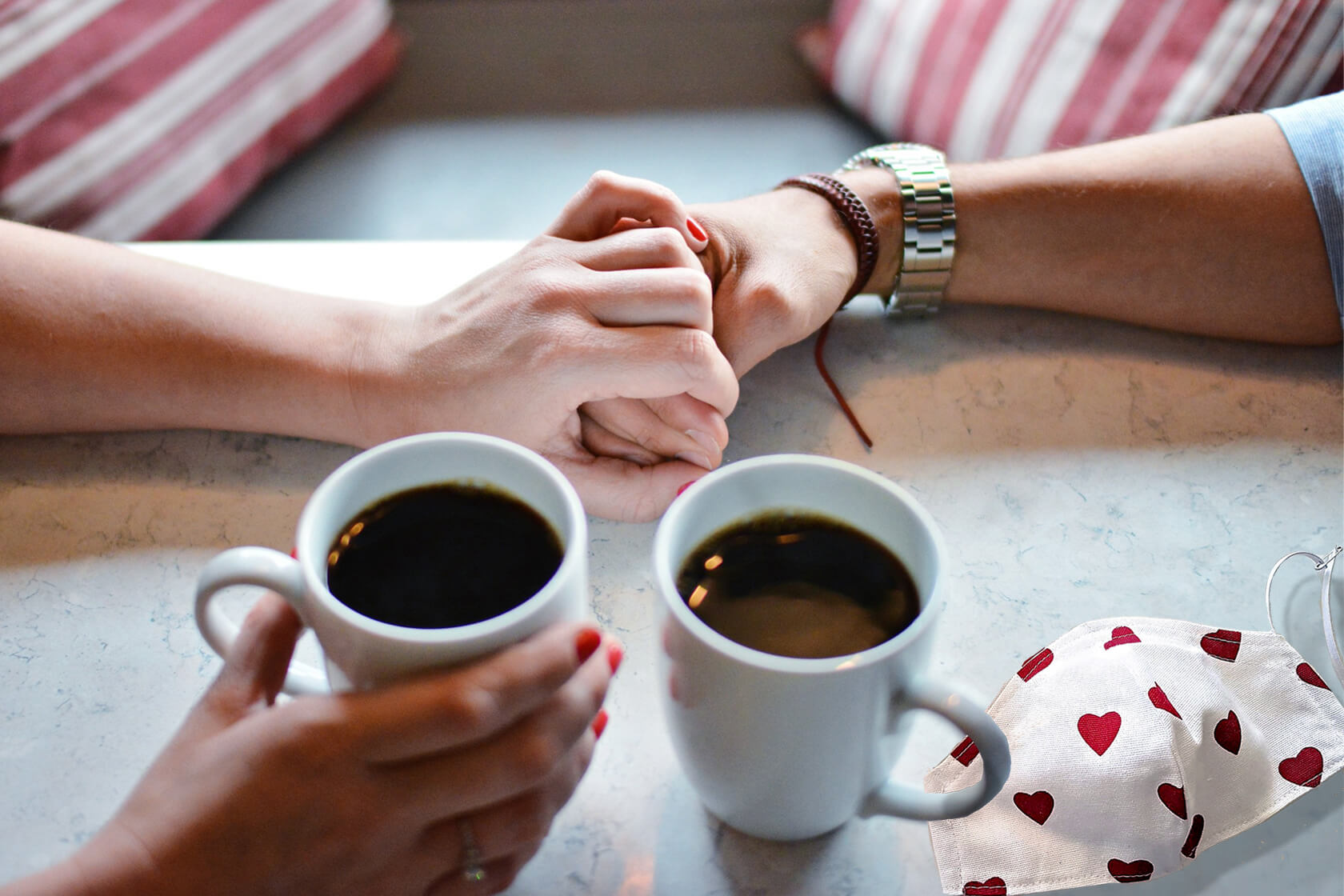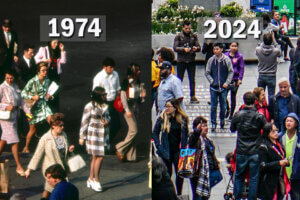West Long Branch, NJ – Romantic relationships have become increasingly important to Americans’ happiness since the onset of the coronavirus outbreak, according to a national Monmouth (“Mon-muth”) University Poll. Among those currently in a romantic relationship, 7 in 10 are extremely satisfied with it, which is up more than ten points from prior surveys. Half of those in a relationship say they really want a night out for Valentine’s Day, but they are more likely to stay home this year instead.
Among Americans who are currently married, living with a partner or otherwise in a romantic relationship, 9 in 10 are clearly satisfied with their current relationship. This finding has been consistent since Monmouth started asking this question more than six years ago. However, the number of people who are extremely satisfied now stands at 70% – a marked increase from its typical 57% to 59% territory.
In fact, the percentage who are extremely satisfied has gone up since the early days of the pandemic among both married (73%, from 64% in May 2020) and unmarried (62%, from 47%) people, among both men (73%, from 59%) and women (67%, from 59%), and among white Americans (69%, from 61%) and people of color (73%, from 57%). Extreme satisfaction with one’s relationship has also jumped since last year among those aged 18 to 34 (69%, from 56%) and those aged 35 to 54 (74%, from 58%), although it has held steady among those aged 55 and older (66%, from 64%).
“Too often we’re quick to doubt relationships and see them as more fragile than they are. In reality, our relationship is a tremendous source of strength and stability in uncertain times. Our poll in May found more than half thought the pandemic would strengthen their relationship. That seemed like wishful thinking, but these numbers show that optimism was warranted” said Dr. Gary Lewandowski, professor of psychology at Monmouth University and author of the newly released book, Stronger Than You Think: The 10 Blind Spots That Undermine Your Relationship…and How to See Past Them.
Two-thirds (66%) of Americans in a relationship say their partner is extremely important to their own overall happiness and another 26% say their partner is very important. When Monmouth last asked this question in 2014, 56% said their relationship was extremely important to their happiness and 33% said it was very important. Married individuals (70%, up from 60%) remain more likely than those who are not married (54%, up from 44%) to say their partner is extremely important to their happiness. In fact, the vast majority (86%) of American adults currently in a relationship say their partner is their best friend, including 89% of those who are married and 78% in a non-marital relationship.
A large majority (68%) of Americans with a romantic partner say their relationship has not changed since the coronavirus outbreak started last year. Another 21% say their overall relationship has improved while just 9% say it has worsened. During the outbreak’s early stages last spring, 74% said their relationship was the same, 17% said it was better, and 5% said it was worse. There are few demographic differences in these results, although those under 35 years old are more likely to say their relationship has now improved (34%) than said the same last May (24%).
“Early on, many thought the pandemic would have dire consequences for relationships. These data suggest those predictions were wrong. While some relationships worsened, more improved, and most stayed the same, which is impressive given the difficult circumstances. The pandemic required couples to spend more time with their partner. For many, that person is also their best friend, which helps explain why the experience is more beneficial than damaging to the relationship.” said Lewandowski.
The poll also asked those currently in a relationship about their Valentine’s Day plans this year. About 1 in 5 (19%) say they will go out to dinner or some other event. Most say they will either do something special at home (38%) or, conversely, not mark the day at all (39%). When Monmouth asked a similar question in 2014, 42% said that they and their partner usually go out for Valentine’s Day and just 13% said they usually stay in. This year, married couples (42%) are more likely than unmarried couples (32%) to have no special plans at all.
“It may seem sad that fewer couples will be going out this year, but it’s a good sign that many still plan on celebrating together, even if it is just at home. Research shows that couples should take every opportunity to celebrate life’s positives, because doing so improves relationship quality. We need to emphasize the good, because doing so allows us to weather the difficulties,” said Lewandowski.
If they had to choose just one Valentine’s Day gift and the outbreak was not a factor, fully half (50%) of those currently in a relationship say a night out on February 14th would make them happiest. This wish far outpaces spending time at home doing a favorite activity (19%), planning a new activity together such as taking a class (12%), or receiving either a simple (13%) or expensive gift (4%). More people want a night out now than said the same in 2014 (40%), while somewhat fewer want to celebrate at home this year than said the same in Monmouth’s prior poll (26%). There are only small differences for naming a night on the town as their preferred Valentine’s Day gift between those who are married (52%, up from 42% in 2014) and unmarried (46%, from 33%).
When asked what type of activity would make them happier on Valentine’s Day, 53% choose doing something with their partner that is familiar or routine while 45% prefer a new and challenging activity. Most married individuals opt for the familiar (58%) while those in an unmarried relationship are more inclined to try something new (62%). Also, younger people tend to be more likely to want a new and challenging activity – 60% of those aged 18 to 34, 45% of those aged 35 to 54, and 34% of those aged 55 and older – although this age difference is not really evident among unmarried couples.
“Younger and unmarried poll participants are more likely to emphasize novelty, but research shows these experiences are more critical for those in long-term relationships to promote greater passionate love, satisfaction, and commitment. Though difficult during COVID, couples should be wary of falling into a rut and becoming bored in their relationship. Familiarity and routine may have increased appeal because so much around us seems unstable. In uncertain times our partner is often our ‘rock’ who we rely on when life feels less reliable,” said Lewandowski.
The Monmouth University Poll was conducted by telephone from January 21 to 24, 2021 with 809 adults in the United States. The results in this release are based on 551 individuals who are currently in a relationship – of which 74% are married, 12% are living with a partner, and 14% are in a non-cohabitating romantic relationship – and have a +/- 4.2 percentage point sampling margin of error. The poll was conducted by the Monmouth University Polling Institute in West Long Branch, NJ.
QUESTIONS AND RESULTS
(* Some columns may not add to 100% due to rounding.)
[Q1-31 previously released.]
32.Which of the following best describes you: married, living with a partner, never been married, widowed, divorced, or separated? [If NEVER MARRIED/WIDOWED/DIVORCED: Are you currently in a romantic relationship with someone?]
| TREND: | Jan. 2021 | May 2020 | Jan. 2017 | Dec. 2014 |
| Married | 51% | 48% | 50% | 52% |
| Living together | 9% | 10% | 10% | 7% |
| In a relationship | 9% | 8% | 10% | 11% |
| No relationship | 31% | 32% | 29% | 28% |
| (VOL) No answer | 1% | 1% | 1% | 1% |
| (n) | (809) | (808) | (801) | (1,008) |
[The following questions were asked only of those currently in a relationship; n=551, m.o.e.=+/-4.2%]
33.How satisfied are you with your current relationship – extremely, very, somewhat, not too, or not at all satisfied?
| TREND: | Jan. 2021 | May 2020 | Jan. 2017 | Dec. 2014 |
| Extremely satisfied | 70% | 59% | 57% | 58% |
| Very satisfied | 22% | 33% | 31% | 30% |
| Somewhat satisfied | 6% | 4% | 9% | 8% |
| Not too satisfied | 0% | 0% | 1% | 2% |
| Not at all satisfied | 1% | 1% | 1% | 2% |
| (VOL) Don’t know | 1% | 2% | 1% | 1% |
| (n) | (551) | (556) | (566) | (749) |
34.And how important is your partner to your overall happiness – extremely, very, somewhat, not too, or not at all important?
| TREND: | Jan. 2021 | Dec. 2014 |
| Extremely important | 66% | 56% |
| Very important | 26% | 33% |
| Somewhat important | 7% | 8% |
| Not too important | 1% | 1% |
| Not at all important | 1% | 1% |
| (VOL) Don’t know | 0% | 1% |
| (n) | (551) | (749) |
35.Do you consider your partner to be your best friend or do you call somebody else your best friend?
| TREND: | Jan. 2021 | Jan. 2017 |
| Partner | 86% | 83% |
| Somebody else | 12% | 14% |
| (VOL) Both my partner and other | 1% | 1% |
| (VOL) Call no one my best friend | 0% | 0% |
| (VOL) Don’t know | 1% | 1% |
| (n) | (551) | (566) |
36.Would you say your romantic relationship has gotten better or worse since the coronavirus outbreak started last year, or is it about the same? [Is that a lot or a little better/worse?]
| TREND: | Jan. 2021 | May 2020 |
| A lot better | 13% | 10% |
| A little better | 8% | 7% |
| About the same | 68% | 74% |
| A little worse | 6% | 4% |
| A lot worse | 3% | 1% |
| (VOL) Relationship started after outbreak | 1% | n/a |
| (VOL) Don’t know | 1% | 4% |
| (n) | (551) | (556) |
37.Do you and your partner get into arguments more often, less often, or about the same as you did before the outbreak? [Is that a lot or a little more/less often?]
| TREND: | Jan. 2021 | May 2020 |
| A lot more often | 2% | 1% |
| A little more often | 8% | 9% |
| About the same | 72% | 70% |
| A little less often | 8% | 9% |
| A lot less often | 8% | 9% |
| (VOL) Relationship started after outbreak | 1% | n/a |
| (VOL) Don’t know | 2% | 2% |
| (n) | (551) | (556) |
38.Looking ahead to Valentine’s Day next month, will you and your partner do anything special to mark the day? [If YES: Will you go out to dinner or some other event or will you stay in to celebrate the day?]
| Jan. 2021 | |
| Yes, go out | 19% |
| Yes, stay in | 38% |
| No, nothing special | 39% |
| (VOL) Don’t know | 4% |
| (n) | (551) |
[QUESTIONS 39 & 40 WERE ROTATED]
39.If you had to choose just one Valentine’s Day gift and the outbreak wasn’t a factor, which of the following would make you the happiest – an expensive gift like jewelry or electronics, a simple gift like flowers or candy, having a night out such as dinner or a show, planning a new and interesting activity together such as taking a class, or spending some time together at home doing a favorite activity? [CHOICES WERE ROTATED]
| TREND: | Jan. 2021 | Dec. 2014 |
| Expensive gift | 4% | 5% |
| Simple gift | 13% | 15% |
| Night out | 50% | 40% |
| New activity | 12% | 11% |
| Stay home | 19% | 26% |
| (VOL) Other | 1% | 2% |
| (VOL) Nothing/Don’t know | 2% | 2% |
| (n) | (551) | (749) |
40.If you had to choose just one way to celebrate Valentine’s Day and the outbreak wasn’t a factor, which of the following would make you the happiest – doing something new, challenging, and interesting together, or doing something together that is familiar, well-known, and routine?
| Jan. 2021 | |
| New, challenging, and interesting activity | 45% |
| Familiar, well-known, and routine activity | 53% |
| (VOL) Something else | 0% |
| (VOL) Nothing at all | 0% |
| (VOL) Don’t know | 2% |
| (n) | (551) |
METHODOLOGY
The Monmouth University Poll was sponsored and conducted by the Monmouth University Polling Institute from January 21 to 24, 2021 with a national random sample of 809 adults age 18 and older. This includes 298 contacted by a live interviewer on a landline telephone and 511 contacted by a live interviewer on a cell phone, in English. Telephone numbers were selected through random digit dialing and landline respondents were selected with a modified Troldahl-Carter youngest adult household screen. Monmouth is responsible for all aspects of the survey design, data weighting and analysis. The full sample is weighted for region, age, education, gender and race based on US Census information (ACS 2018 one-year survey). Data collection support provided by Braun Research (field) and Dynata (RDD sample). The key results in this poll release are based on a subsample of 551 individuals who are currently in a relationship. For results based on this sample, one can say with 95% confidence that the error attributable to sampling has a maximum margin of plus or minus 4.2 percentage points (unadjusted for sample design). Sampling error can be larger for sub-groups (see table below). In addition to sampling error, one should bear in mind that question wording and practical difficulties in conducting surveys can introduce error or bias into the findings of opinion polls.
| DEMOGRAPHICS (weighted) | |
| ALL ADULTS | IN A RELATIONSHIP |
| Self-Reported | Self-Reported |
| 25% Republican | 27% Republican |
| 41% Independent | 42% Independent |
| 34% Democrat | 31% Democrat |
| 49% Male | 52% Male |
| 51% Female | 48% Female |
| 30% 18-34 | 25% 18-34 |
| 33% 35-54 | 39% 35-54 |
| 37% 55+ | 36% 55+ |
| 64% White | 67% White |
| 12% Black | 8% Black |
| 16% Hispanic | 15% Hispanic |
| 8% Asian/Other | 10% Asian/Other |
| 70% No degree | 66% No degree |
| 30% 4 year degree | 34% 4 year degree |
Click on pdf file link below for full methodology and crosstabs by key demographic groups.




